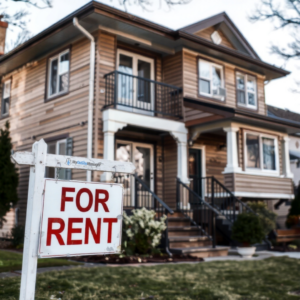The Dallas-Fort Worth (DFW) metropolitan area has experienced significant changes in its rental housing market over recent years. As of November 2024, the median monthly rent in North Texas stands at $1,903, positioning DFW 22nd among large U.S. metropolitan areas in terms of rental costs. This ranking highlights the evolving affordability challenges and opportunities in the region.
DFW’s Rental Landscape in Detail
Breaking down the median rents in DFW by apartment size:
- Studio: $1,489
- One-bedroom: $1,585
- Two-bedroom: $1,855
- Three-bedroom: $2,373
- Four-bedroom: $3,002
These figures highlight the substantial financial commitment required for renters across various apartment sizes in the region. The costs reflect the increasing demand for housing in DFW, driven by population growth, economic expansion, and migration trends.
Comparative Analysis with Other Texas Cities
Within Texas, Austin emerges as the most expensive rental market, ranking 17th nationally with a median rent of $2,109. Houston, on the other hand, is more affordable, ranking 37th with a median rent of $1,507. These numbers underscore the varied rental affordability landscape across Texas, where different economic drivers influence rental prices.
National Context: How DFW Compares
California dominates the upper echelon of rental markets, with cities like San Jose ($3,451), San Diego ($3,175), San Francisco ($3,141), and Los Angeles ($2,777) leading the list. When compared to these high-cost areas, DFW remains relatively moderate in terms of rental affordability. However, its increasing rank in rental prices signals the need for renters and policymakers to pay close attention to housing trends in North Texas.
Factors Influencing DFW’s Rental Market
Several elements have shaped the current state of DFW’s rental market:
- Supply and Demand Dynamics: Post the housing crash and Great Recession, new housing construction projects declined and were slow to recover throughout the 2010s. Concurrently, the Millennial generation, America’s largest with over 72 million members, entered adulthood, increasing demand in the market. Limited housing supply coupled with growing demand has created upward pressure on rental prices.
- Economic Growth: DFW’s robust economy, characterized by job growth and corporate relocations, has attracted a steady influx of residents. The region serves as a hub for industries such as technology, healthcare, and finance, bringing in professionals who contribute to rising demand for rental properties.
- Population Influx: The region’s appeal, driven by factors like a favorable business climate, no state income tax, and diverse cultural offerings, has led to population growth. Many people relocating from high-cost states such as California and New York find DFW an attractive alternative, further straining the housing supply.
- Remote Work Influence: The COVID-19 pandemic reshaped housing preferences, with many professionals opting for larger living spaces to accommodate home offices. This shift has influenced rental trends, particularly for larger apartments and homes, which have seen increased demand.
Implications for Renters and Policymakers
For renters, the escalating costs necessitate strategic financial planning and exploration of affordable housing options. Renters may need to consider moving to suburban areas, opting for smaller living spaces, or negotiating leases to secure the best possible rates.
Policymakers, on the other hand, are challenged to address these trends by promoting affordable housing initiatives and encouraging sustainable development to balance the supply-demand equation. Expanding public transportation, increasing zoning flexibility, and incentivizing developers to build mixed-income housing could help mitigate affordability concerns.
Future Outlook
Looking ahead, the trajectory of DFW’s rental market will depend on several factors, including economic conditions, population growth, and housing policies. While rental prices are expected to continue rising, efforts to increase housing supply and affordability initiatives could help ease the burden on renters.
In conclusion, while DFW’s rental prices are comparatively moderate on a national scale, they reflect a complex interplay of economic and demographic factors that continue to shape the region’s housing market. Renters, investors, and policymakers alike must stay informed and adaptable to navigate this evolving landscape effectively.
Source: Here’s where DFW’s average rent price ranks in the U.S.

